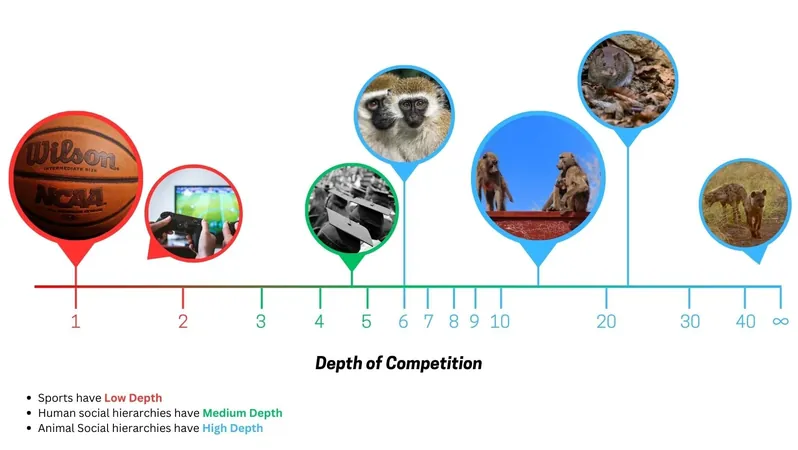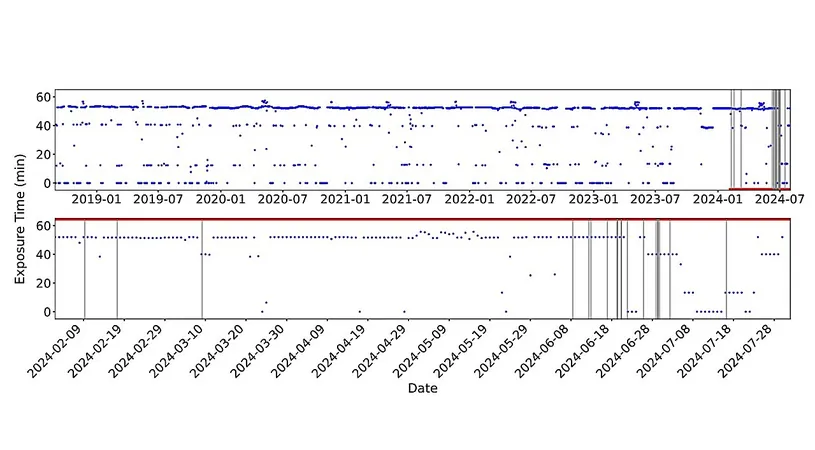
Unveiling the Depth of Competition: How Hierarchies Shape Sports and Society
2024-11-06
Author: William
Researchers at the University of Michigan have introduced an innovative mathematical framework to enhance our understanding of competition outcomes across various contexts, including sports, games, and social hierarchies among both humans and animals. Their groundbreaking study, published in the prestigious journal Science Advances, reveals a concept they term "depth of competition."
This new dimension can be applied to a range of valuable fields, with potential implications for predicting the outcomes of sports matches, forecasting consumer behavior, ranking educational institutions, and evaluating hiring practices in the workforce. Essentially, this model stands to revolutionize how we analyze competitive interactions by offering a singular lens through which to compare vastly different scenarios—whether it’s the results of board games or the social hierarchies of wild animals.
Max Jerdee, a physics doctoral student at U-M and co-author of the study, explains, "The model treats every dataset uniformly, be it from sports or animal behaviors. Our goal is to develop a universal method for measuring competition inequalities across diverse settings."
In this framework, competition depth is closely linked to the level of inequality present in the interactions. A more profound competition indicates a greater stratification among participants based on skill and standing. Interestingly, the study finds that human sports and games often occupy the "shallow" end of the depth spectrum, which some might find surprising.
Mark Newman, a U-M professor of physics and complex systems, clarifies this notion. He asserts that while basketball, for example, showcases a broad range of player skills, actual competition tends not to reflect this diversity due to the mismatch in talent levels. "It's not that basketball lacks depth; it's just that playing against someone far superior serves little purpose," he explains.
Within the context of competitive hierarchies, consider the classic chicken pecking order. This term illustrates a clearly defined hierarchy where strong birds dominate weaker ones with minimal risk involved. According to the study's parameters, basketball competition is rated at less than one layer of depth, whereas the pecking order in chickens boasts approximately 20 layers. The social structure of hyenas, with its complexity and predictability, exceeds even that at over 100 layers.
Moving beyond sport, human social interactions—like university rankings or dynamics within high school cliques—find themselves positioned between these avian competition and animal hierarchies in terms of depth.
Moreover, this novel model doesn't just measure competition depth; it also holds predictive capabilities. It can identify likely winners in various contests, suggesting tools for assessing university rankings, forecasting market preferences, or even predicting the outcomes of sporting events featuring competitors who've never faced each other.
To illustrate its predictive power, the research team discovered that the University of Michigan's 2022 football team would have had an impressive 89% chance of defeating the University of Wisconsin based on the model's calculations.
As scholars continue to explore this framework, the implications stretch far beyond the academic realm, posing significant questions about competition, inequality, and their manifold effects on our society. Who will capitalize on this emerging research? What will it mean for the future of competitive sports, hierarchies, and beyond? Stay tuned as more institutions begin to adopt these findings!









 Brasil (PT)
Brasil (PT)
 Canada (EN)
Canada (EN)
 Chile (ES)
Chile (ES)
 España (ES)
España (ES)
 France (FR)
France (FR)
 Hong Kong (EN)
Hong Kong (EN)
 Italia (IT)
Italia (IT)
 日本 (JA)
日本 (JA)
 Magyarország (HU)
Magyarország (HU)
 Norge (NO)
Norge (NO)
 Polska (PL)
Polska (PL)
 Schweiz (DE)
Schweiz (DE)
 Singapore (EN)
Singapore (EN)
 Sverige (SV)
Sverige (SV)
 Suomi (FI)
Suomi (FI)
 Türkiye (TR)
Türkiye (TR)